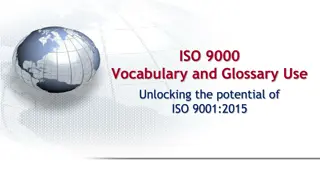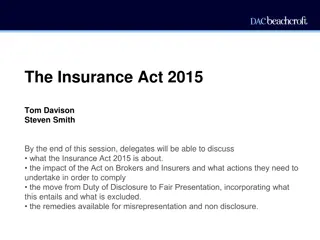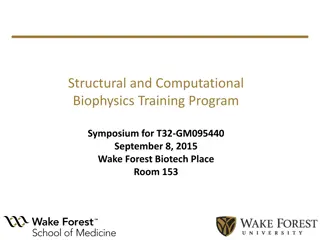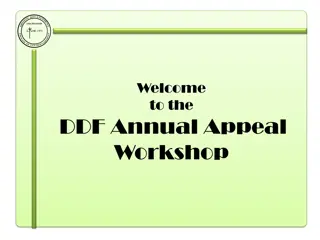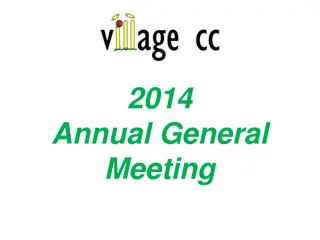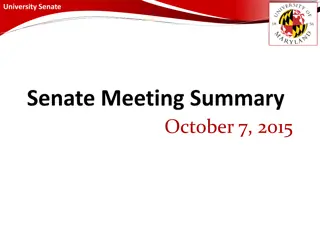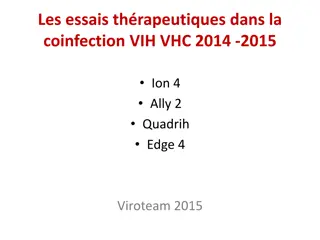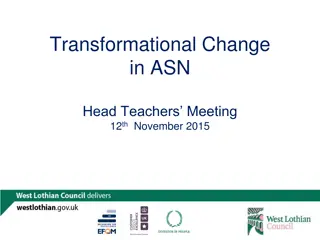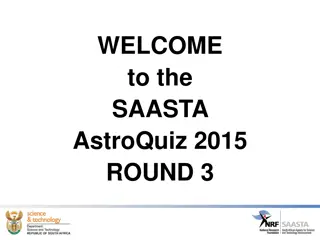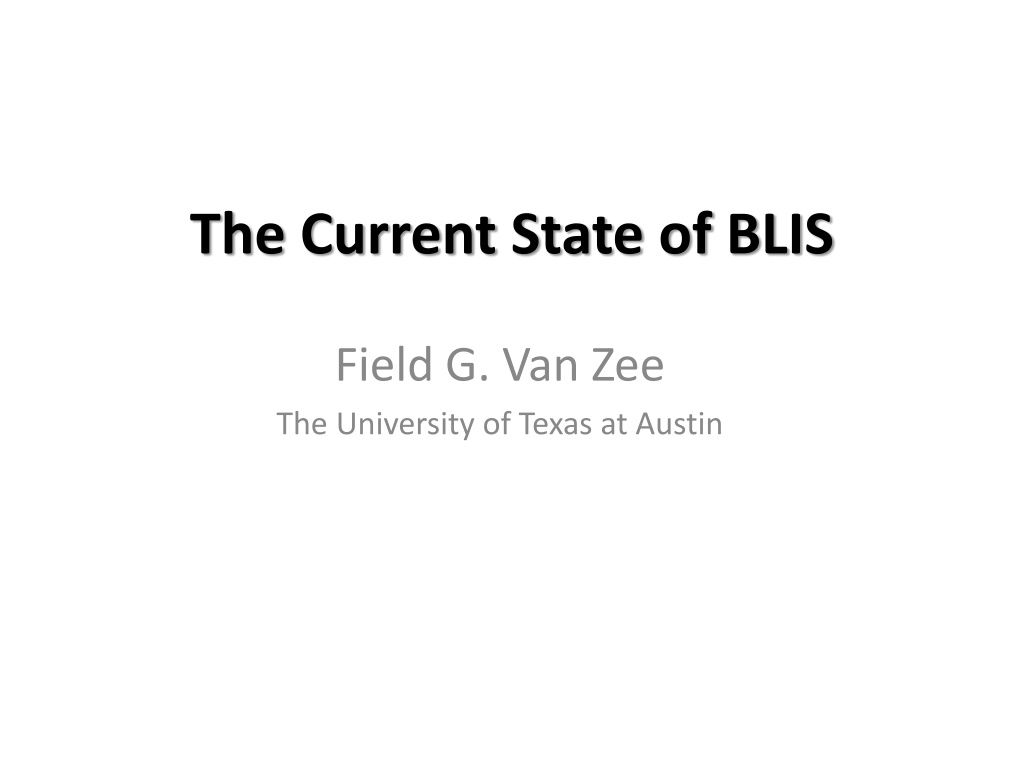
State of BLIS Field and Funding Overview
Explore the current state of BLIS field, its funding sources, key publications, credits, and reviews. Discover BLIS as a framework for instantiating BLAS libraries and its limitations.
Download Presentation

Please find below an Image/Link to download the presentation.
The content on the website is provided AS IS for your information and personal use only. It may not be sold, licensed, or shared on other websites without obtaining consent from the author. If you encounter any issues during the download, it is possible that the publisher has removed the file from their server.
You are allowed to download the files provided on this website for personal or commercial use, subject to the condition that they are used lawfully. All files are the property of their respective owners.
The content on the website is provided AS IS for your information and personal use only. It may not be sold, licensed, or shared on other websites without obtaining consent from the author.
E N D
Presentation Transcript
The Current State of BLIS Field G. Van Zee The University of Texas at Austin
Funding NSF Award ACI-1148125/1340293: SI2-SSI: A Linear Algebra Software Infrastructure for Sustained Innovation in Computational Chemistry and other Sciences. (Funded June 1, 2012 - May 31, 2015.) Award CCF-1320112: SHF: Small: From Matrix Computations to Tensor Computations. (Funded August 1, 2013 - July 31, 2016.) Industry (grants and hardware) Microsoft Intel AMD Texas Instruments
Publications BLIS: A Framework for Rapid Instantiation of BLAS Functionality (TOMS; in print) The BLIS Framework: Experiments in Portability (TOMS; accepted) Anatomy of Many-Threaded Matrix Multiplication (IPDPS; in proceedings) Analytical Models for the BLIS Framework (TOMS; accepted pending modifications) Implementing High-Performance Complex Matrix Multiplication (TOMS; in review)
BLIS Credits Field G. Van Zee Core design, build system, test suite, induced complex implementations, various hardware support (Intel x86_64, AMD) Tyler M. Smith Multithreading support, various hardware support (IBM BG/Q, Intel Phi, AMD) Francisco D. Igual Various hardware support (Texas Instruments DSP, ARM) Xianyi Zhang Configure-time hardware detection, various hardware support (Loongson 3A) Several others Bugfixes and various patches Robert A. van de Geijn Funding, group management, etc.
Review BLAS: Basic Linear Algebra Subprograms Level 1: vector-vector [Lawson et al. 1979] Level 2: matrix-vector [Dongarra et al. 1988] Level 3: matrix-matrix [Dongarra et al. 1990] Why are BLAS important? BLAS constitute the bottom of the food chain for most dense linear algebra applications, as well as other HPC libraries LAPACK, libflame, MATLAB, PETSc, etc.
Review What is BLIS? A framework for instantiating BLAS libraries (ie: fully compatible with BLAS) What else is BLIS? Provides alternative BLAS-like (C friendly) API that fixes deficiencies in original BLAS Provides an expert object-based API Provides a superset of BLAS functionality A productivity lever A research sandbox
Limitations of BLAS Interface supports only column-major storage We want to support column-major storage, row- major storage, and general stride (tensors). Further yet, we want to support operands of mixed storage formats. Example: C = C + A B where A is column-stored, B is row-stored, and C has general stride.
Limitations of BLAS Incomplete support for complex operations (no conjugate without transposition ) Examples: y = y + conj(x) y = y + A conj(x) C = C + conj(A) B C = C + conj(A) AT B = conj(L) B B = conj(L)-1B axpy gemv gemv, gemm her, herk trmv, trmm trsv, trsm
Limitations of BLAS No standard API for lower-level kernels We want to be able to break through layers to optimize higher-level operations BLAS was designed only as a specification for an end-user library Instead, we want a framework for building such libraries
Limitations of BLAS Operation support has not changed since the 1980 s We want to support for critical operations omitted from the BLAS 11
Limitations of BLAS Let s look at limitations of specific implementations Netlib GotoBLAS/OpenBLAS ATLAS MKL 12
Limitations of BLAS Netlib Free and open source (public domain) Very slow Fortran-77 Just a collection of routines Meant as a reference implementation 13
Limitations of BLAS GotoBLAS (Kazushige Goto) Now maintained by Xianyi Zhang under the name OpenBLAS Free and open source (BSD) Very fast Supports many architectures Difficult to read or understand Not just the assembly code 14
Limitations of BLAS ATLAS (Clint Whaley) Free and open source (BSD-like) Picks from a collection of assembly kernels, and fine- tunes itself, or tunes itself from scratch on new/unknown architectures Algorithms only allow square blocksizes Sometimes does a poor job Very large executable footprint Difficult (or impossible) cross-compiling Difficult to read and understand Auto-tuning mechanism is extraordinarily complex 15
Limitations of BLAS MKL (Intel) Basic functionality is very fast for Intel architectures. We ve discovered suboptimal cases on occasion (mostly in LAPACK) Commercial product Recently became free! Not open source Not extensible Maybe not so fast on AMD hardware? 16
Why do we need BLIS? Current options are Woefully inadequate; slow netlib Byzantine; difficult to read (effectively a black box) OpenBLAS, ATLAS Closed source (an actual black box) MKL Bloated; not suitable for embedded hardware ATLAS 17
Why do we need BLIS? And even if there were a BLAS library that was clean, free, fast, and small The interface is still inadequate It s still not a framework 18
What are the goals of BLIS? BLIS priorities Abstraction (layering) Extensible Readable (clean) Easy to maintain (compact; minimal code duplication) High performance Compatibility (BLAS, CBLAS) 19
Current status of BLIS License: 3-clause BSD Current version: 0.1.8-4 Reminder: How does versioning work? Host: http://github.com/flame/blis Documentation / wikis (in transition) GNU-like build system Configure-time hardware detection (x86_64 only) BLAS / CBLAS compatibility layers
Current status of BLIS Multiple APIs BLAS, CBLAS, BLAS-like, object-based Generalized hierarchical multithreading Quadratic partitioning for load balance Dynamic memory allocator No more configuration needed Induced complex domain matrix multiplication Comprehensive, fully parameterized test suite
BLIS build system Follows GNU conventions (roughly) ./configure ; make ; make install Static and/or shared library output No auto-tuning Compilation is straightforward and quick (1 ~ 5 minutes) Relatively compact library footprint: BLIS: ~ 3MB ATLAS (with f77 API): ~ 7MB
Current hardware support Reference implementation (C99) ARM v7/v8 Loongson 3A IBM POWER7 Blue Gene / Q
Current hardware support Intel Penryn/Dunnington Sandy Bridge / Ivy Bridge Haswell / Broadwell Xeon Phi (Knights Corner) AMD Bulldozer / Piledriver / Steamroller / Excavator
BLAS compatibility BLAS compatibility API Supports 32- and 64-bit integers (configure-time option) Arbitrary prepending/appending of underscores (configure-time option) Lowercase symbols only CBLAS compatibility API Netlib (not CLAPACK) Built in terms of BLAS API
BLIS architectural features Level-3 operations Five loops around a common gemm micro-kernel Exception: trsm. Requires additional specialized micro-kernels Consolidation of macro-kernels: 1. gemm/hemm/symm 2. herk/her2k/syrk/syr2k 3. trmm/trmm3 4. trsm Exposed matrix packing kernels Usually not optimized. Why? bandwidth saturation; lower-order term
What does the micro-kernel look like? [gemm] micro-kernel C is MR x NR (where MR, NR 4) k dimension is relatively large += C A B But how do we get there? 28
The gemm algorithm += 29
The gemm algorithm NC NC += 30
The gemm algorithm += 31
The gemm algorithm KC KC += 32
The gemm algorithm += 33
The gemm algorithm += Pack row panel of B 34
The gemm algorithm += Pack row panel of B NR 35
The gemm algorithm += 36
The gemm algorithm MC += 37
The gemm algorithm += 38
The gemm algorithm += Pack block of A 39
The gemm algorithm += Pack block of A MR 40
The gemm algorithm += 41
The gemm algorithm += 42
The gemm algorithm NR NR += 43
The gemm algorithm += 44
The gemm algorithm MR += MR 45
The gemm algorithm += 46
The gemm micro-kernel += 47
The gemm micro-kernel NR KC NR MR C += A KC B 48
The gemm micro-kernel NR KC NR MR C += A KC B 0 1 2 3 00 01 02 03 0 10 11 12 13 1 += 20 21 22 23 2 30 31 32 33 3 49
BLIS architectural features Generalized level-2/-3 infrastructure Core set of generic algorithms Control trees encode the execution path between them to induce desired overall algorithm Think of them like hierarchical instructions A new algorithm does not necessarily result in new code, just a new control tree
BLIS architectural features Level-2 operations Common level-1v/level-1f kernels axpyv, dotxv, axpy2v, dotxf, dotxaxpyf Performance of Is improved by optimizing But is improved even more by optimizing gemv, trmv, trsv (column-stored) axpyv axpyf gemv, trmv, trsv (row-stored) dotx dotxf hemv/symv (row- and column-stored) dotx + axpyv, dotaxpyv dotxaxpyf her2/syr2 (row- and column-stored) axpyv axpy2v her/syr (row- and column-stored) axpyv
BLAS compatibility layer char transa, transb; int m, n, k; int lda, ldb, ldc; double *alpha, *beta, *a, *b, *c; transa = N ; // no transpose transb = T ; // transpose // etc... dgemm_( &transa, &transb, &m, &n, &k, alpha, a, &lda, b, &ldb, beta, c, &ldc ); 52

